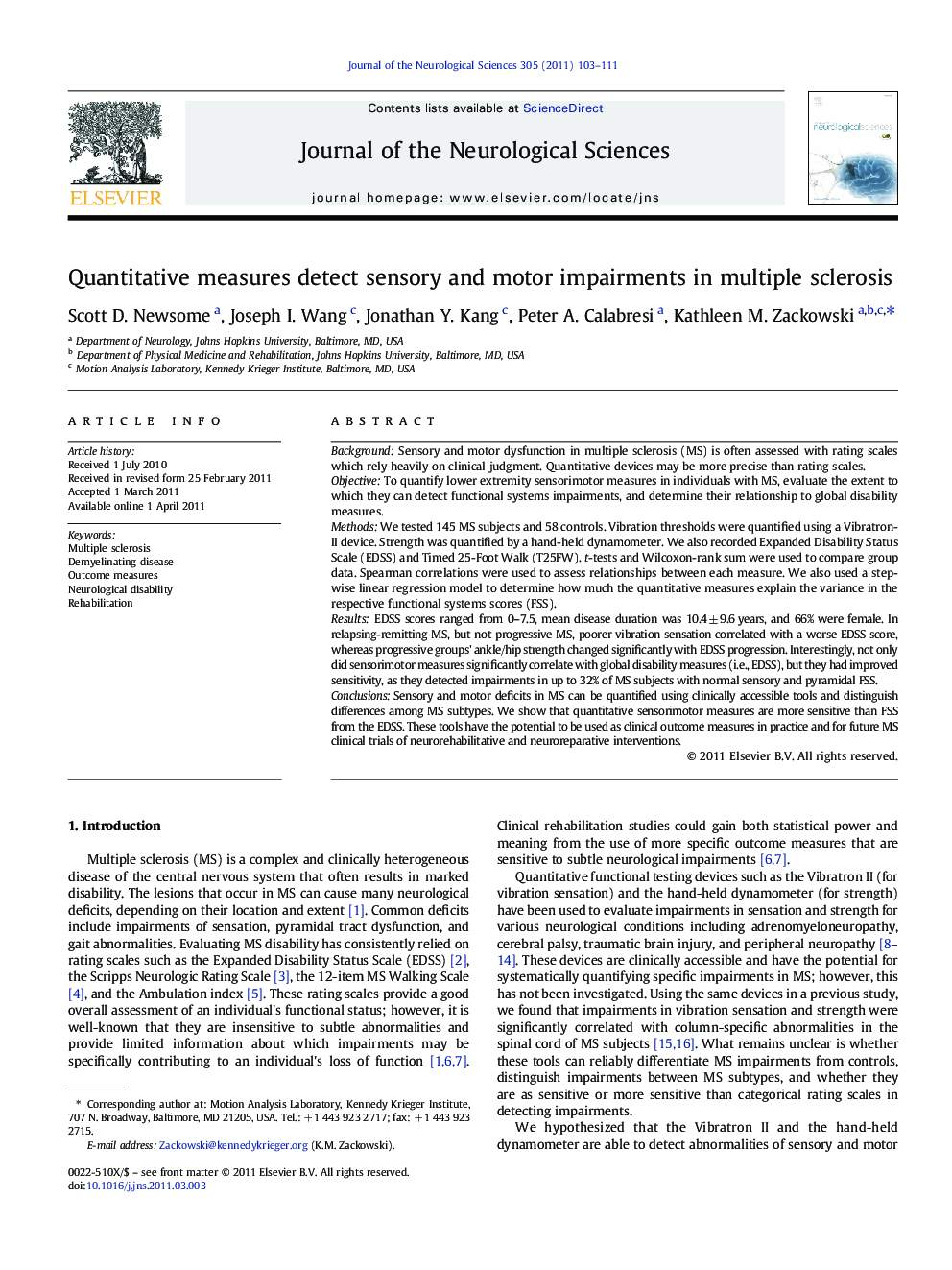| Article ID | Journal | Published Year | Pages | File Type |
|---|---|---|---|---|
| 1914342 | Journal of the Neurological Sciences | 2011 | 9 Pages |
BackgroundSensory and motor dysfunction in multiple sclerosis (MS) is often assessed with rating scales which rely heavily on clinical judgment. Quantitative devices may be more precise than rating scales.ObjectiveTo quantify lower extremity sensorimotor measures in individuals with MS, evaluate the extent to which they can detect functional systems impairments, and determine their relationship to global disability measures.MethodsWe tested 145 MS subjects and 58 controls. Vibration thresholds were quantified using a Vibratron-II device. Strength was quantified by a hand-held dynamometer. We also recorded Expanded Disability Status Scale (EDSS) and Timed 25-Foot Walk (T25FW). t-tests and Wilcoxon-rank sum were used to compare group data. Spearman correlations were used to assess relationships between each measure. We also used a step-wise linear regression model to determine how much the quantitative measures explain the variance in the respective functional systems scores (FSS).ResultsEDSS scores ranged from 0–7.5, mean disease duration was 10.4 ± 9.6 years, and 66% were female. In relapsing-remitting MS, but not progressive MS, poorer vibration sensation correlated with a worse EDSS score, whereas progressive groups' ankle/hip strength changed significantly with EDSS progression. Interestingly, not only did sensorimotor measures significantly correlate with global disability measures (i.e., EDSS), but they had improved sensitivity, as they detected impairments in up to 32% of MS subjects with normal sensory and pyramidal FSS.ConclusionsSensory and motor deficits in MS can be quantified using clinically accessible tools and distinguish differences among MS subtypes. We show that quantitative sensorimotor measures are more sensitive than FSS from the EDSS. These tools have the potential to be used as clinical outcome measures in practice and for future MS clinical trials of neurorehabilitative and neuroreparative interventions.
